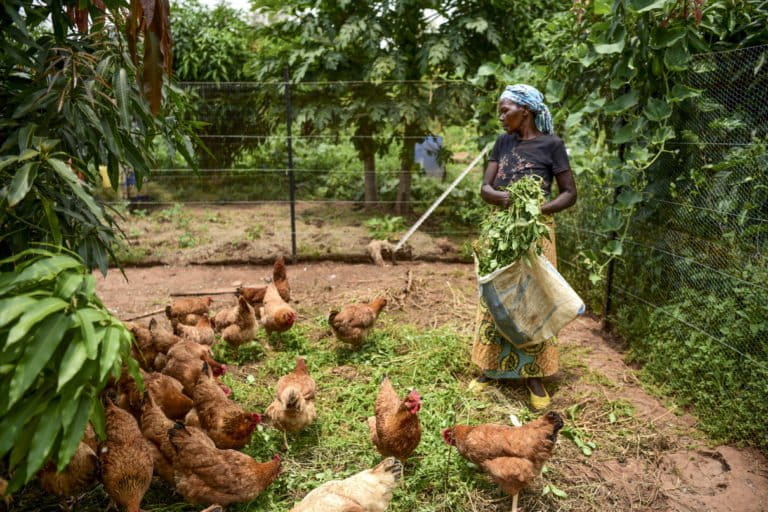- Since the colonization of the Congo Basin by Europeans, many Indigenous communities have been cordoned off from land they once relied on in the name of conservation.
- The contentious “fortress conservation” model remains popular with some governments in Central Africa, but conservation leaders are shifting their opinion, signaling a desire to move toward inclusive and rights-based approaches to protected areas and ecosystems, including in declarations such as the Kigali Call to Action.
- However, Indigenous leaders and conservation experts say action, not just talk, is urgently needed to achieve the goals outlined by the 30×30 initiative, and to make good on promises to address injustices faced by Indigenous communities across the basin.
- On this episode of Mongabay Explores the Congo Basin, Cameroonian lawyer and Goldman Prize winner Samuel Nguiffo, Congolese academic Vedaste Cituli, and Mongabay features writer Ashoka Mukpo detail the troubling history of fortress conservation in Central Africa, the role of paramilitary forces in it, the impacts on local communities, and ways to address the conflicts it has created.
The concept of a “pristine wilderness” is a flawed one, researchers argue, but this pervasive idea — one where human absence is required in order to preserve land — occupies the management of many protected areas in the Congo Basin. It’s a global phenomenon whose roots run deep, as far back as European colonization, but its impacts live on today in the exclusion of local and Indigenous peoples from lands they once relied on and managed sustainably.
On this episode of Mongabay Explores, Samuel Nguiffo, Vedaste Cituli and Ashoka Mukpo detail the history and social impacts of “fortress conservation,” its intersection with conservation militarization, and the violence endured by the communities who inhabit protected areas.
Listen here:
The fortress conservation model is ubiquitous in the Congo Basin, such as in Kahuzi-Biega National Park, where 6,000 Indigenous Batwa people were expelled.
“The model of pristine conservation, it is a model that considers conservation as an approach outside of people. An approach in which we conserve nature only for research needs, for aesthetic needs, and in this, we put people outside of conservation,” says Vedaste Cituli, who works in Kahuzi-Biega National Park analyzing the relationship between the Batwa and conservation management and is a teacher at the Bukavu Higher Institute of Rural Development (known by its French acronym ISDR) in the Democratic Republic of Congo.
But the model itself isn’t the only factor impacting the lives and livelihoods of Indigenous communities. In recent years, NGOs such as WWF have shouldered criticism for their response to allegations of ranger violence against local community members. Meanwhile, militia groups operating in the border regions of some African states have put organizations such as African Parks in a precarious position, where they’ve become the frontline of defense for these vulnerable borders from outside forces.

State governments are finding themselves signing contracts with NGOs to manage even larger areas of land, while some are hesitant, according to lawyer and Goldman Prize-winning conservation activist Samuel Nguiffo who founded the Center for Environment and Development (CED) in Cameroon. The increasing trend of paramilitary forces involved in conservation management, and the fortress conservation model itself, warrants the criticism it gets, according to Mongabay features writer Ashoka Mukpo.
“The question I think that is important to ask ourselves about the Congo Basin is really, ‘Is this securitized approach to conservation working, and what’s the cost?,’” he says on this episode.
Addressing the injustices of fortress conservation was a key point of discussion at last year’s Africa Protected Areas Congress (APAC), which resulted in the Kigali Call to Action. However, Cituli remains skeptical of any resulting action from the congress, which notably the Democratic Republic of Congo didn’t participate in.
“I think the current problem in nature conservation is that we don’t put decisions into action. These are decisions that are not implemented. I think you know that for the actions of Kigali, although it is an action that gathered many countries, especially the countries of the African Great Lakes, the DRC did not participate in Kigali because it did not want to participate in these actions while it is in conflict with Rwanda,” he says.

Nguiffo details a path forward that has already started to take shape in his country of Cameroon, a model of community-led management that includes Indigenous communities. Nguiffo says this approach will enable African states to surpass the conservation agenda outlined in the 30×30 declaration, which calls for protecting 30% of Earth’s land and sea by 2030.
“If [local communities] are empowered to get involved and to manage conservation, community-led conservation, it will be possible to get far more than the 30% of the territories [protected],” he says.

Subscribe to or follow Mongabay Explores wherever you get podcasts, from Apple to Spotify, and you can also listen to all episodes here on the Mongabay website, or download our free app for Apple and Android devices to gain instant access to our latest episodes and all our previous ones.
Listen to the first episode in this podcast series here:
Sounds heard during the intro and outro: The call of a putty-nosed monkey (Cercopithecus nictitans). This soundscape was recorded in Ivindo National Park in Gabon by Zuzana Burivalova, Walter Mbamy, Tatiana Satchivi and Serge Ekazama.
Banner image: The Indigenous Batwa were evicted from their forest home in Uganda in the early 1990s when Mgahinga Gorilla National Park was established, leaving them landless and poor in a society that saw them as a lower class. Image by USAID Biodiversity & Forestry via Flickr (Public Domain).
Mike DiGirolamo is Mongabay’s audience engagement associate. Find him on Twitter @MikeDiGirolamo, Instagram, TikTok and Mastodon.
